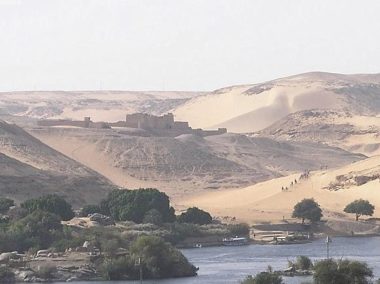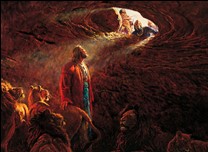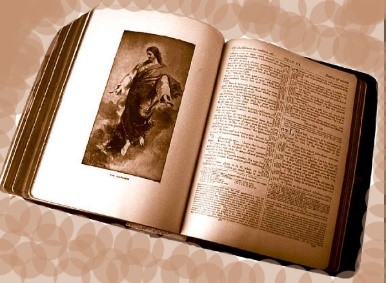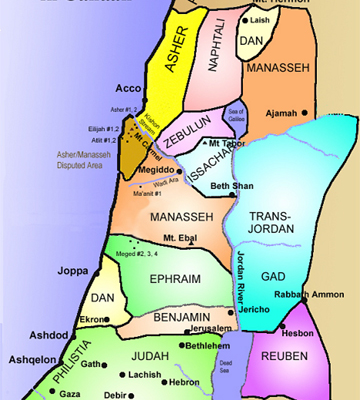Faith of Abraham/ The Long Journey

The Faith of Abraham lesson helps to explain what it is like to leave the known and go to a place of the unknown. Using Abraham as an example the child should look at their lives in facing new experiences like a new school, a new friends or the newness of life. Having faith in the LORD to follow their journey in life begins by going hand in hand with Jesus. Hebrews 11:8-10.
“By faith Abraham, when he was called to go out into a place which he should after receive for an inheritance, obeyed; and he went out, not knowing whither he went. By faith he sojourned in the land of promise, as [in] a strange country, dwelling in tabernacles with Isaac and Jacob, the heirs with him of the same promise: For he looked for a city which hath foundations, whose builder and maker [is] God.” Hebrews 11:8-10.
What was it like for Abraham to leave the land he knew to go to the land of promise?
He lived as a stranger in a place he did not know by faith.
Abraham went out not knowing where to go
Abraham sojourned in the land of promise
Abraham dwelled in tabernacles with Isaac and Jacob
Abraham looked for a city which had foundations
Abraham no longer lived in a comfortable house, but rather slept in tents as he walked toward his destination.
He was a man without a country, without a support system, without tradition, without friends, and without most family; yet, he moved toward the promise of land, in search for the one true LORD God.
Nomads: a tribe of people who moved around. By faith, Abram sojourned in the land of promise. He lived as a stranger in a place he did not know. Abraham would hunt: Bison, Deer, Elk, Wild horses, Fish, Lizards, and Snakes.
The Fertile Crescent is where Abraham and his family lived. It is located between Mesopotamia and the Nile Valley, Iraq, Saudi Arabia, Syria, Jordan, Israel, Lower Egypt. The Nomads found these to be abundant in the Fertile Crescent: Plants, Trees, Thick grass, Wild Barley, Wild Wheat. Along with the plants, the animals were abundant also. With all this water the Nomads no longer had to ration their water and take their first bath.
As they explored the land, they met other tribes who had also discovered the rich land. Soon, they learned to put seeds into the ground, and grow their own crops, which allowed them to finally stay in one area and be able to provide and survive for themselves, their families and their tribes.
The settled nomads learned that they needed to tend to their planted crops, and keep them watered to ensure their growth. That meant the farmers had to tend to their corps for months at a time, requiring a change in their nomadic lifestyle. They began to build houses that would stay in one place, with materials they could find in the area, like reeds near the river, or hardened mud bricks from the soil.
Some of the first nomads settled right in the middle of the Fertile Crescent in the land of Mesopotamia. Mesopotamia means “the land between two rivers.” It got its name because it was located right in the middle of two great rivers; the Tigris and the Euphrates.
Soon, they discovered that it was helpful to build their houses closer together, so they could help each other. That is how the first villages began. When the farmers learned that they could tame sheep and goats, they would put a central pen or field right in the middle of their villages. Eventually, the villages became successful at raising sheep and goats, growing grain and making breads and pottery.
They began building boats so they could sail along the rivers and visit other villages. Soon, the villages began to trade with each other the items plentiful within their own villages, like sheep’s wool, animal skins, metals, pottery and wood. When the villages began to grow rich, the inhabitants became fearful that they would be attacked and robbed by bandits. They built big stone walls around their villages, which became the first cities ever built.
One of the earliest cities was Jericho. Jericho had one of the strongest, thickest walls in the ancient world, which stood 13 feet tall and 10 feet thick, with a circular tower on one side so lookouts could see their enemies approaching Egyptians.
The people who settled in the Nile River Valley experienced life differently than those who settled along the Tigris and Euphrates Rivers. The Nile River was different, because it was often low, with very little water in it, and then other times it was so full that it flooded over all the farmland. The Nile River flows north from the African deserts to Egypt. The ground is dry and sandy. Ancient Egyptians built their houses next to the Nile because it was the only water they could find, and that water had to be drawn and scooped with buckets every day.
During the summer, the water from the Nile River was plentiful, but as summer turned to fall and winter, the water level would get lower and lower. By the middle of winter, there would be just a low, muddy stream running down the center of the river. The sun would dry the river more, and the ground would become dry and cracked. In the spring, it would start to rain in the distant mountains, far away from Ancient Egypt where rain seldom falls. But hundreds of miles away, rain would began pouring down, running down the mountains and straight into the Nile River. Suddenly, a huge flood of rushing water scooped up mud and rich soil from the bottom of the muddy Nile River Valley and tumbled it down the valley, straight to Egyptian lands. These lands filled the river bed and overflowed the banks on both sides.
Every spring that the Nile River flooded the Egyptians were very happy. The water soaked into the dry ground and prepared it for crops, as it left behind the rich soil from the bottom of the river. They found the flood placed silt grew excellent crops! The Nile River Valley is also part of the Fertile Crescent, but it needed something besides sunlight and water. It depended completely upon the flooding of the Nile. The Nile Delta, where the river splits into many different little rivers and runs into the Mediterranean Sea was particularly fertile as the spring floods brought life to the land.
What Can We Learn From This Story?
Abraham was motivated not only by the LORD God’s direction, but by a deep desire that the LORD placed in him from the start. Abraham listened to the Will of the LORD. Not all of God’s children were made that way from start, not all are born in families that walk the way of faith. Rather, they are scattered in the world, in all kinds of life situations; seldom do they come from the foundation of faith that are expressed solidly by their family and friends.
Our loving Lord Jesus Christ paved the way for any journey that His followers have to take. He has created a map for the travelers to follow that will lead them straight to Him. Yet, danger lies at the sides of the path along the journey, as the wicked seek to stop the walk. It is in faith that we go down that path, being guided by His Word to find that solid foundation that will give a spiritual stance to form our faith in Him. They first must leave the familiar world filled with worldly and natural hopes and desires, and take a step into the unknown that has only the promise of finding the LORD God as they travel the path first laid by the Lord Jesus Christ.
Part of the faith of Abraham expresses the brave journey that is walked in faith of finding the LORD God and being brought to His bosom through the Lord Jesus Christ. We must take that first step in trust in a LORD God that you do not know. It takes faith to take this step.
Each person must take that step of faith! Sometimes that means that children leave Christian families to embrace worldly things. This makes the family sad. Just like the faith of Abraham; A child cannot travel the parent’s path; he must be brave enough, have faith enough, to take that step on his own. The faith of Abraham expresses the faith that is needed to walk toward the things of the LORD God.
Cite Article Source
MLA Style Citation:
Holstein, Joanne “Faith of Abraham/ The Long Journey:.” Becker Bible Studies Library Oct 2014.< https://guidedbiblestudies.com/?p=1634,>.
APA Style Citation:
Holstein, Joanne (2014, October) “Faith of Abraham/ The Long Journey:.” Becker Bible Studies Library. Retrieved from https://guidedbiblestudies.com/?p=1634 ,.
Chicago Style Citation:
Holstein, Joanne (2014) “Faith of Abraham/ The Long Journey:.” Becker Bible Studies Library (October), https://guidedbiblestudies.com/?p=1634, (accessed).


